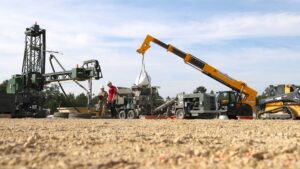ARA experts help to uncover the physical and psychological links between blast effects and brain trauma6/15/16
In a June 2016 article in The New York Times Magazine, “What if PTSD is More Physical Than Psychological?” researchers seek to better understand the physical and psychological links between blast effects and brain trauma.
ARA’s Leanne Young and former ARA employee Charles Needham contribute their experience and expertise to the ongoing research that is helping to uncover the science behind these physical effects.
Featured in the article is ARA’s 2007 study of military breachers, which uncovered innovative new developments in the understanding of blast impacts. Evidence from this study showed instructors, who were exposed to more blasts than students, experienced declined performance suggesting significant effects in correlation with chronic exposure to blasts. This finding alludes to the suspicion that explosive blasts do physically injure the brain.
If physical injury is the case, it is possible that soldiers diagnosed with PTSD from emotional trauma actually have tissue damage triggering the disorder. Knowing the direct cause of such mental disorders in the soldier and veteran population could make a great difference in how these patients are treated.
Today’s research on physical blast effects on the brain is closer than ever to determining exactly what happens to our soldiers in the field. Every step toward answers is a step closer to ensuring that those returning home from combat receive the most accurate healthcare and treatments possible. ARA’s contributions support our company’s vision to provide innovative technologies and solutions to critical human problems that will make our world safer, make us more secure, and make a difference in our daily lives.
Explore more stories where ARA research is helping to understand blast effects and brain trauma:



